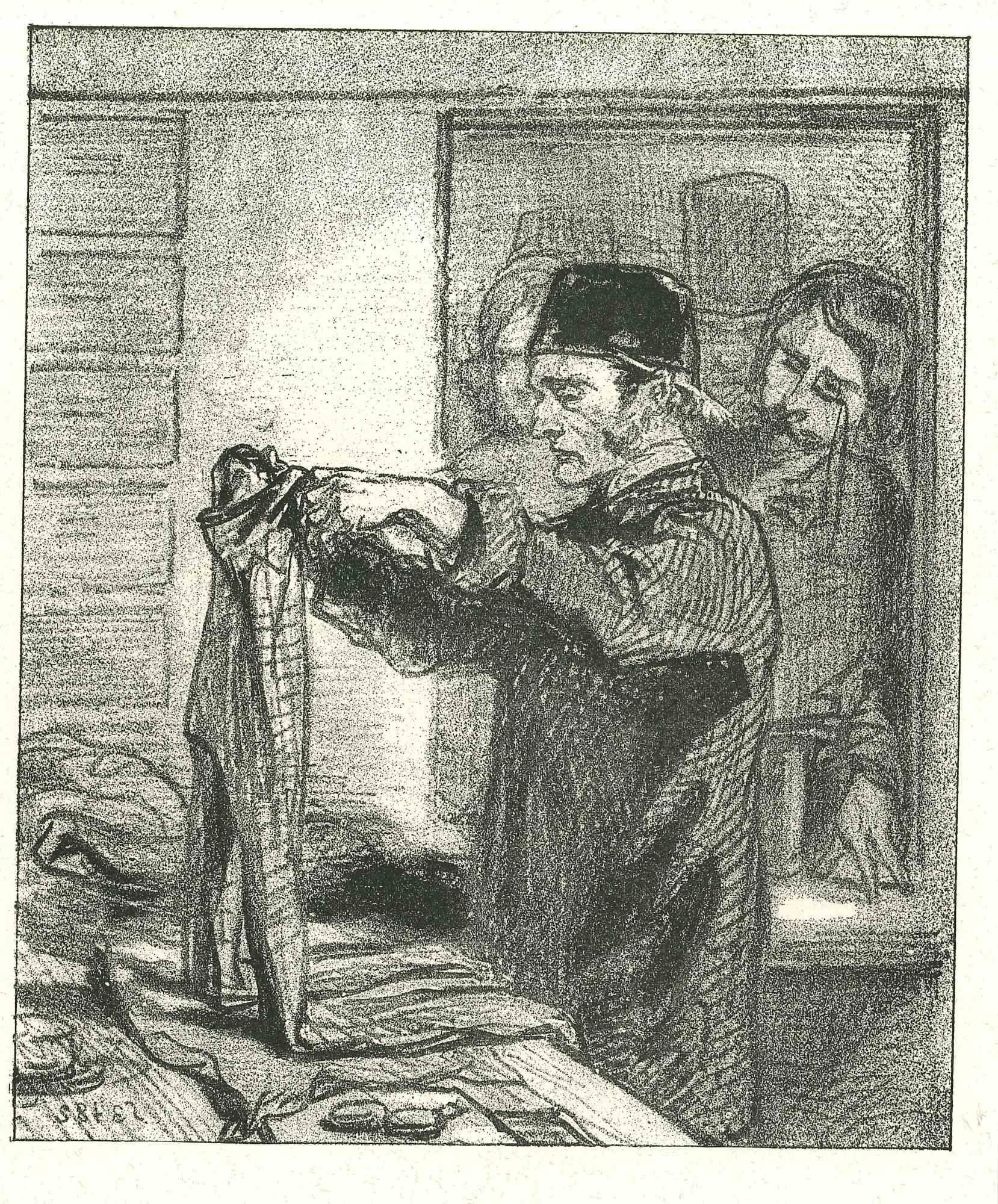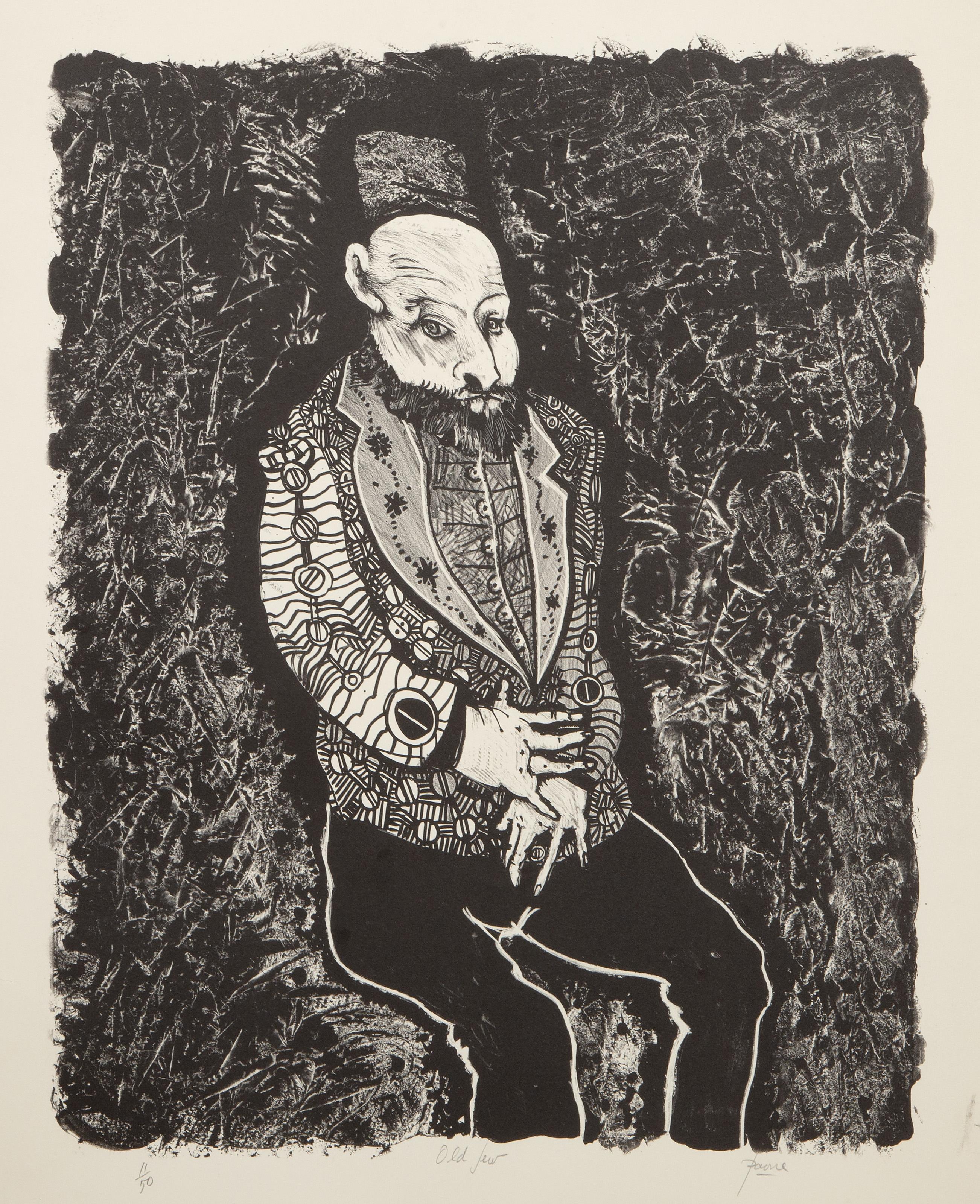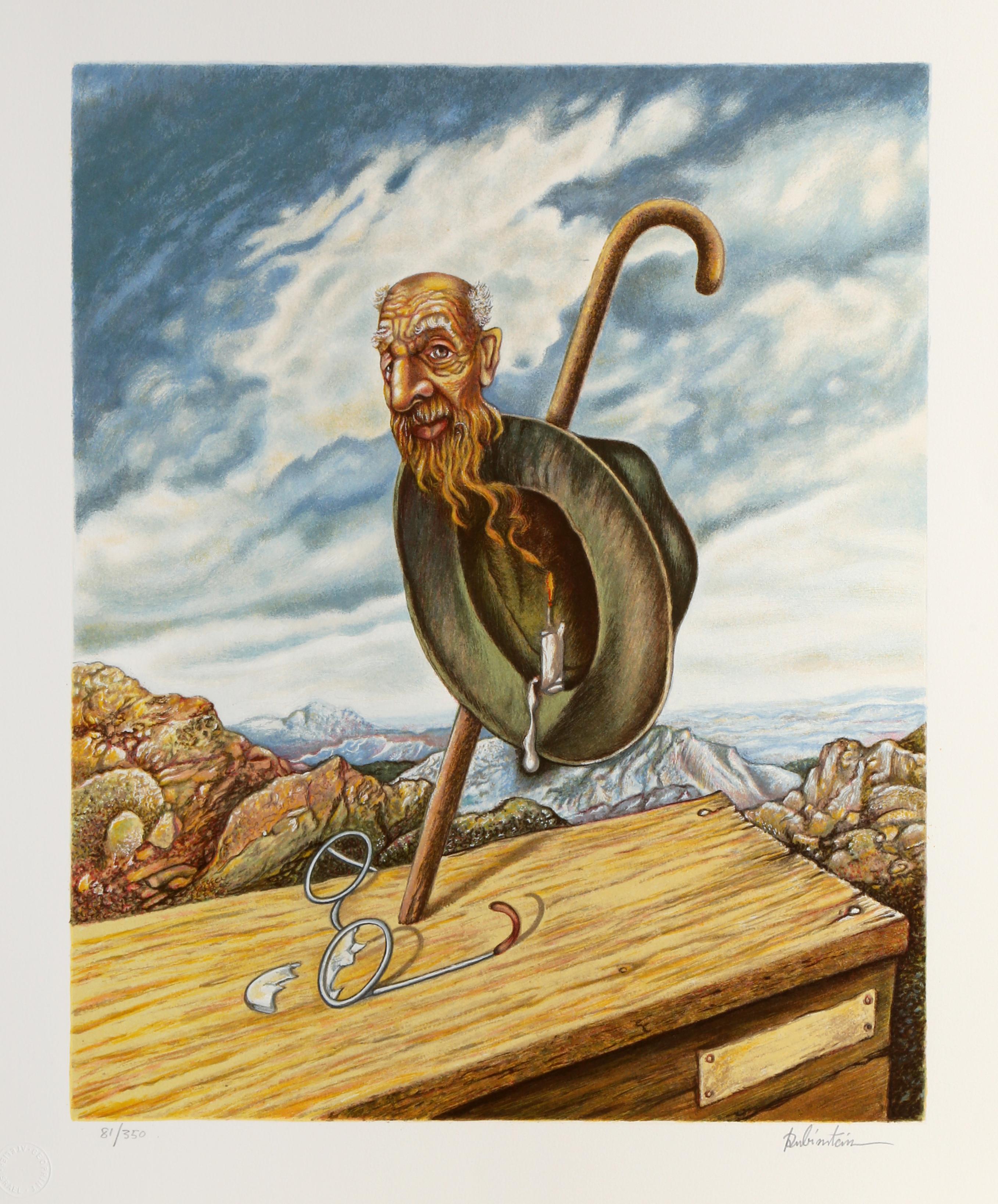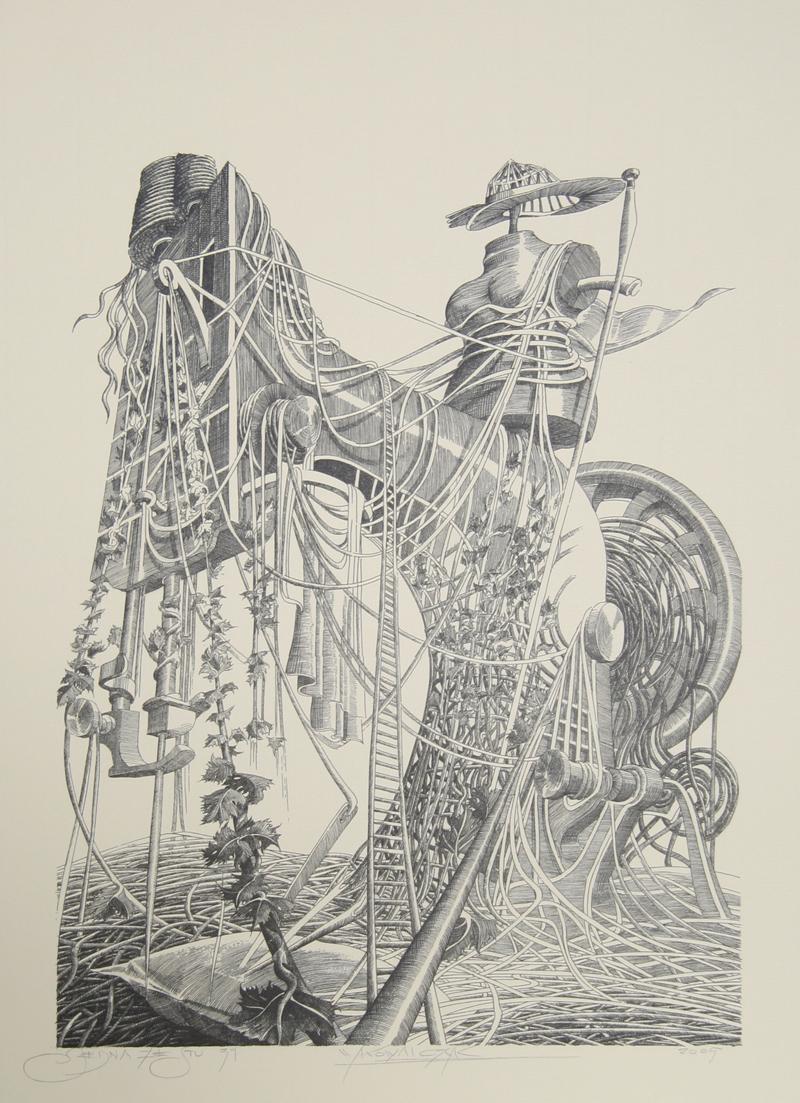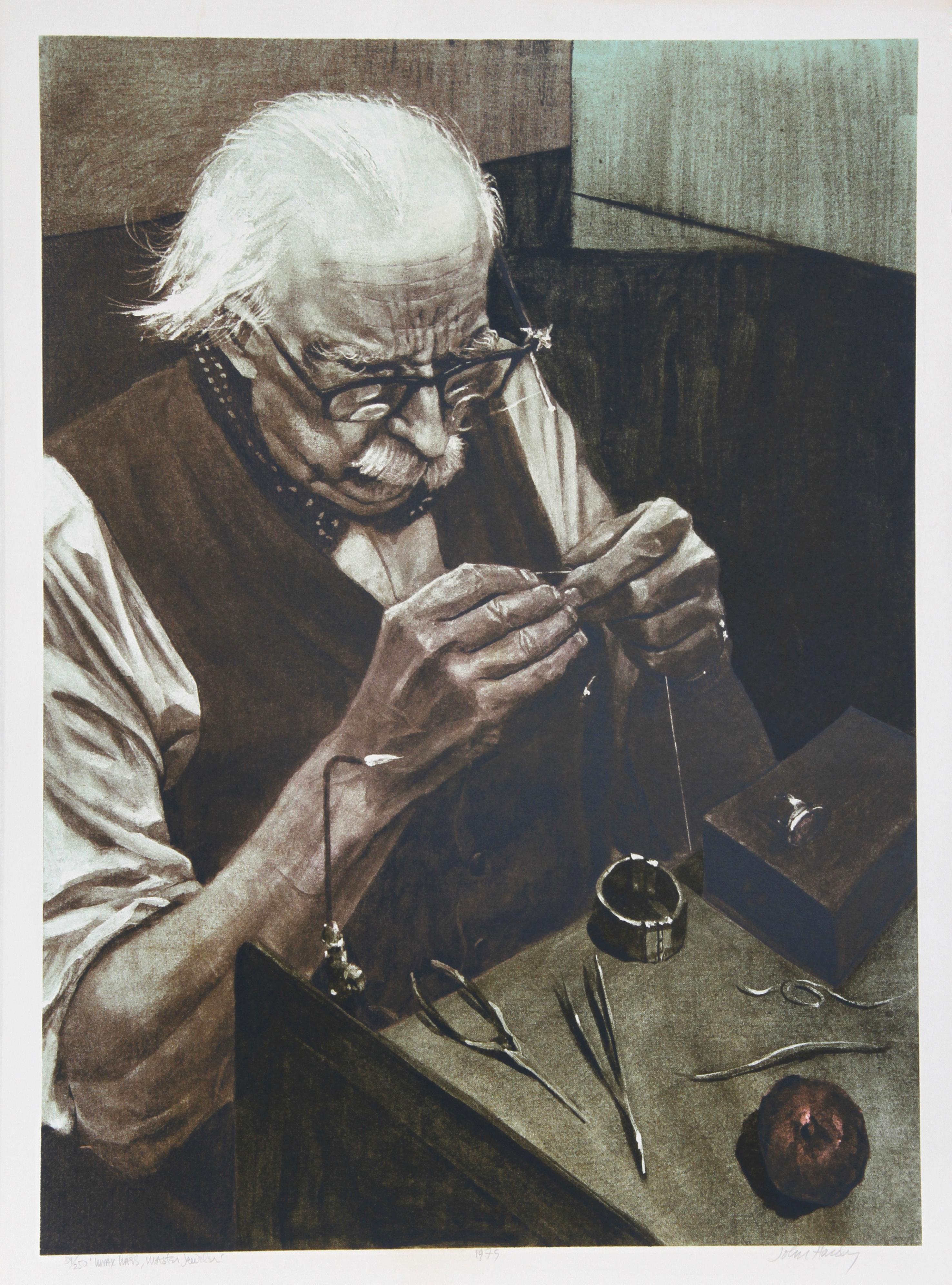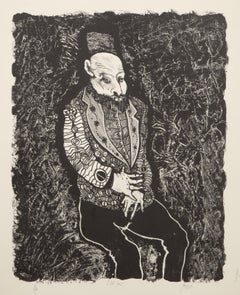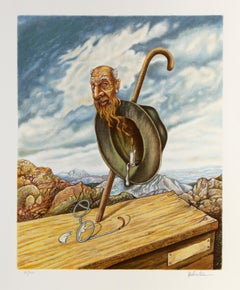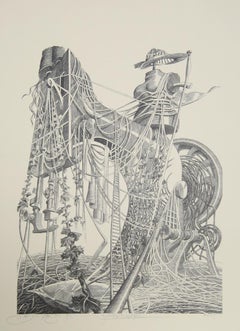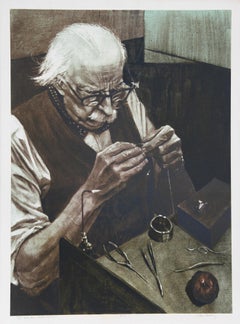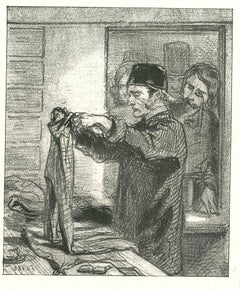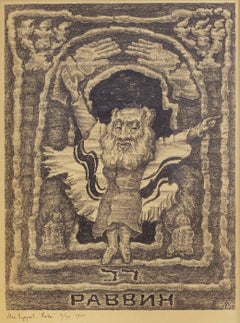Items Similar to The Tailor, Surrealist Lithograph by George Russin
Want more images or videos?
Request additional images or videos from the seller
1 of 8
George RussinThe Tailor, Surrealist Lithograph by George Russincirca 1979
circa 1979
$500
£388.12
€440.25
CA$713.92
A$786.68
CHF 408.04
MX$9,356.53
NOK 5,161.58
SEK 4,835.31
DKK 3,288.01
About the Item
The Tailor
George Russin, American (1910–2010)
Lithograph, signed and numbered in pencil
Edition of 250
Size: 29 x 22 in. (73.66 x 55.88 cm)
- Creator:George Russin (1910 - 2010)
- Creation Year:circa 1979
- Dimensions:Height: 29 in (73.66 cm)Width: 22 in (55.88 cm)
- Medium:
- Movement & Style:
- Period:
- Framing:Framing Options Available
- Condition:
- Gallery Location:Long Island City, NY
- Reference Number:Seller: 578841stDibs: LU46614903642
About the Seller
4.9
Platinum Seller
Premium sellers with a 4.7+ rating and 24-hour response times
Established in 1979
1stDibs seller since 2014
3,170 sales on 1stDibs
Typical response time: 1 hour
- ShippingRetrieving quote...Shipping from: Long Island City, NY
- Return Policy
More From This Seller
View AllOld Jew, Surrealist Lithograph by Peter Paone
Located in Long Island City, NY
Peter Paone, American (1936 - ) - Old Jew, Year: circa 1963, Medium: Lithograph on Rives, signed, titled and numbered in pencil, Edition: 11/50, Image Si...
Category
1960s Surrealist Portrait Prints
Materials
Lithograph
Old Age, Screenprint by Israel Rubinstein
Located in Long Island City, NY
"Israel Rubinstein
(1944 - )
Date: 1980
Screenprint on Arches, signed and numbered in pencil
Edition of 350
Image Size: 24 x 21 inches
Size: 31 x 27 ...
Category
1980s Surrealist More Prints
Materials
Screen
Untitled - Seamstress, Surrealist Lithograph by Wojtek Kowalczyk
Located in Long Island City, NY
Untitled - Seamstress
Wojtek Kowalczyk, Polish (1960)
Date: 2005
Lithograph, signed in pencil
Size: 19.5 in. x 13.5 in. (49.53 cm x 34.29 cm)
Category
Early 2000s Surrealist Landscape Prints
Materials
Lithograph
Master Jeweler, Lithograph by John Hardy
By John Hardy (Artist)
Located in Long Island City, NY
Master Jeweler
John Hardy, American (1923–2014)
Date: 1979
Lithograph, signed and numbered in pencil
Edition of 250, AP
Image Size: 28 x 20.5 inches
Si...
Category
1970s Contemporary Figurative Prints
Materials
Lithograph
In Between Acts, Surrealist Lithograph by George Russin
Located in Long Island City, NY
In Between Acts
George Russin, American (1910–2010)
Date: circa 1979
Lithograph, signed and numbered in pencil
Edition of 250
Size: 22 x 29 in. (55.88 x 73.66 cm)
Category
1970s Surrealist Figurative Prints
Materials
Lithograph
Robert Blackburn, Contemporary Figurative Lithograph by Ron Adams
Located in Long Island City, NY
This lithograph by artist Ron Adams depicts the renowned printer Robert Blackburn in his workshop in NYC. Blackburn was involved with every major player of the Harlem Renaissance alo...
Category
Early 2000s American Modern Portrait Prints
Materials
Lithograph
You May Also Like
The Tailor - Original Lithograph by Paul Gavarni - 1881
By Paul Gavarni
Located in Roma, IT
The tailor is an original lithograph artwork on ivory-colored paper, realized by the French draftsman Paul Gavarni (after) (alias Guillaume Sulpice Chevalier Gavarni, 1804-1866) in P...
Category
1880s Modern Figurative Prints
Materials
Paper, Lithograph
$165 Sale Price
30% Off
The Mystic Black-Smith - Original lithograph, Signed
Located in Paris, IDF
Jules Perahim (1914-2008)
The Mystic Black-Smith, 1974
Original lithograph
Signed in pencil by the artist
Numbered / 199
On Arches vellum 56 x 38 cm (c. 22 x 15 inches)
INFORMATION...
Category
1970s Surrealist Figurative Prints
Materials
Lithograph
The Rabbi 1977 Soviet Non Conformist Avant Garde Print
By Alek Rapoport
Located in Surfside, FL
Dimensions w/Frame: 25 3/4" x 20 3/4"
Alek Rapoport (November 24, 1933, Kharkiv, Ukraine SSR – February 4, 1997, San Francisco) was a Russian Nonconformist artist, art theorist and teacher.
Alek Rapoport spent his childhood in Kiev (Ukraine SSR). During Stalin's "purges" both his parents were arrested. His father was shot and his mother spent ten years in a Siberian labor camp. Rapoport lived with his aunt. At the beginning of World War II, he was evacuated to the city of Ufa (the Bashkir Autonomous Soviet Socialist Republic). A time of extreme loneliness, cold, hunger and deprivation, this period also marked the beginning of Rapoport's drawing studies.
After the war, Rapoport lived in Chernovtsy (Western Ukraine), a city with a certain European flair. At the local House of Folk Arts, he found his first art teacher, E.Sagaidachny (1886–1961), a former member of the nonconformist artist groups Union of the Youth (Soyuz Molodyozhi) and Donkey's Tail, popular during the 1910s–1920s. His other art teacher was I. Beklemisheva (1903–1988). Impressed by Rapoport's talent, she later (1950) organized his move to Leningrad, where he entered the famous V.Serov School of Art (the former School of the Imperial Society for the Promotion of Arts, OPKh, later the Tavricheskaya Art School).
His association with this school lasted eight years, first as a student, and then, from 1965 to 1968, as a teacher. With "Socialist realism" the only official style during this time, most of the art school's faculty had to conceal any prior involvement in non-conformist art movements. Ya.K.Shablovsky, V.M.Sudakov, A.A.Gromov introduced their students to Constructivism only through clandestine means.
(1959–1963) Rapoport studied stage design at the Leningrad Institute of Theater, Music and Cinema under the supervision of the famous artist and stage director N.P.Akimov. Akimov taught a unique course based on theories of Russian Suprematism and Constructivism, while encouraging his graduate students to apply their knowledge to every field of art design. Despite differences in personal artistic taste with Akimov, who was drawn to Vermeer and Dalí, Rapoport was influenced by Akimov's personality and liberalism, as well as the logical style of his art.
In 1963, Rapoport graduated from the institute. His highly acclaimed MFA work involved the stage and costume design for I.Babel's play Sunset. In preparation, he traveled to the southwest regions of the Soviet Union, where he accumulated many objects of Judaic iconography from former ghettos, disappearing synagogues and old cemeteries. He wandered Odessa in search of Babel's characters and the atmosphere of his books.
He organized a new liberal course in technical aesthetics, introducing his students to Lotman's theory of semiotics, the Modulor of Le Corbusier, the Bauhaus school, Russian Constructivism, Russian icons and contemporary Western art. As a result of his "radicalism," Rapoport was fired for "ideological conspiracy."
He sought to cultivate himself as Jewish artist. This became particularly noticeable after the Six-Day War, when the Israeli victory led intellectuals, including the Jewish intelligentsia, to feel a heightened interest in Jewish culture and its Biblical roots. Rapoport's works of this period include Three Figures, a series of images of Talmudic Scholars, and works dealing with anti-Semitism. In the 1970s Rapoport joined the non-conformist movement, which opposed the dogmas of "Socialist realism" in art, along with Soviet censorship. The movement sought to preserve the traditions of Russian iconography and the Constructivist/Suprematist style of the 1910s. Despite the authorities' persecutions of nonconformist artists (including arrests, forced evictions, terminations of employment, and various forms of routine hassling), they united in a group, "TEV – Fellowship of Experimental Exhibitions." TEV's exhibitions proved tremendously successful.
In the same period, Rapoport became one of the initiators of another anti-establishment group, ALEF (Union of Leningrad's Jewish Artists). In the United States this group was known as "Twelve from the Soviet Underground." Rapoport's involvement with this group increased tension with the authorities and attracted KGB scrutiny, including "friendly conversations," surveillance, detentions and house arrests. It became increasingly dangerous for him to live and work in the USSR. In October 1976, Rapoport with his wife and son were forced to leave Russia.
In Italy, Rapoport exhibited at the Venice Biennale, "La Nuova Arte Sovietica-Una prospettiva non-ufficiale" (1977), participated in television programs about nonconformist art in the Soviet Union, and created lithographic works continuing his theme of Jewish characters from Babel's play Sunset.
In 1977, Rapoport's family was granted U.S. immigration status and settled in San Francisco. a significant event in Rapoport's life occurred in his meeting with San Francisco gallery owner Michael Dunev, who became his friend and representative, organizing all his exhibitions until the artist's death.
Toward the end of the 1980s and beginning of the 1990s, Rapoport completed his most ambitious works on the theme of the Old Testament prophets: Samson Destroying the House of the Philistines (1989), Lamentation and Mourning and Woe (1990), the four paintings Angel and Prophets (1990–1991) and Three Deeds of Moses (1992).
In 1992, the artist's friends in St. Petersburg organized the first exhibition of his works there since his departure into exile, with works patiently gathered from collectors and art museums. This exhibition, held in the City Museum of St. Petersburg and accompanied by headlines such as "A St. Petersburg artist returns to his town," was followed by much larger ones in 1993 (St. Petersburg and Moscow), organized in collaboration with Michael Dunev Gallery under the name California Branches – Russian Roots.
He Exhibited in "Soviet Artists, Jewish Themes...
Category
1970s Post-Modern Figurative Prints
Materials
Lithograph
Justice : the Lawyer - Original lithograph, Signed
Located in Paris, IDF
Jules Perahim (1914-2008)
Justice : the Lawyer, 1974
Original lithograph
Signed in pencil by the artist
Numbered / 199
On Arches vellum 56 x 38 cm (c. 22 x...
Category
1970s Surrealist Figurative Prints
Materials
Lithograph
"Soldier Marionettes" Surrealist Figurative Lithograph
By Donald Sexauer
Located in Houston, TX
Figurative surrealist print of a soldier as a marionette with others suspended in the air behind. A chair is positioned in the back corner with another marionette draped over the cha...
Category
1960s Surrealist Figurative Prints
Materials
Lithograph
The Magician - Etching by Gaetano Pompa - 1970s
By Gaetano Pompa
Located in Roma, IT
The Magician is an original etching realized by Gaetano Pompa in the 1970s.
Good conditions.
hand-signed and numbered on the lower left. Edition, 52/75...
Category
1970s Contemporary Figurative Prints
Materials
Etching
More Ways To Browse
Tailor Art
Tailor Print
Vintage Mermaid Poster
Vintage Winnie The Pooh Prints
Vivian Springford
Warhol Dollar Signs
Warhol Trial Proof
1970s Printed Mirror
Al Pounders
Alberto Giacometti On Sale
Allison Lefcort On Sale
American Psycho
Ayako Rokkaku
Bassano Plates
Basya Wuensch Reiter
Calder Santa Claus
Camille Pissarro Signed
Carlos Merida Silkscreens
